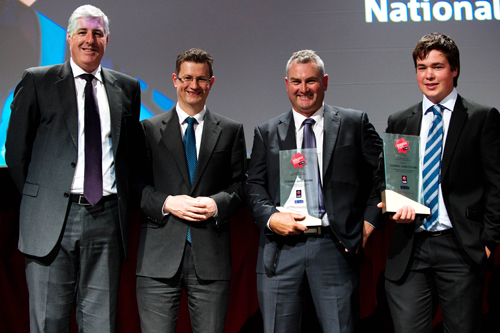
Research shows that student outcomes (学生の参加も含めて, 出席, 定着率と学業成績) 学生がコミュニティとつながり、コミュニティに参加すると、その効果は大幅に向上します。. As part of our on-going 教育のためのグローバル検索 シリーズ, we shall be occasionally showcasing quality practices in school and community programs from which we hope schools around the world will learn and take inspiration.
NAB学校ファースト, supported by National Australia Bank in partnership with the Foundation for Young Australians (FYA) and Australian Council for Educational Research (ACER), operates a national awards program in Australia which has awarded 310 school-community partnerships with $15 million in the past three years to support and sustain those partnerships. Any school in Australia can apply for a NAB School Award and to date over 26% of Australian schools have submitted applications.
The criteria used to assess applications for an award include: 1. The partnership was established to address a need or opportunity that would benefit students. 2. A plan was developed with each partner contributing to the plan. 3. A program was successfully implemented. 4. Students have benefited from the program. 5. The partnership has become part of the culture and planning activities of each partner organization.
教授ジェフ·マスターズ (Chief Executive Officer of ACER) joins me this week to talk further about the NAB学校ファースト school-community initiative, とりわけ. Masters joined ACER in 1988 in the role of Assistant Director (Measurement) and was appointed to the position of Associate Director (Measurement) 中に 1991 before taking on the role of CEO in 1998. Prior to joining ACER, he was a member of the Faculty of Education at the University of Melbourne. He has a PhD in educational measurement from the University of Chicago and has published several books and numerous journal articles in the field of educational assessment. He was the recipient of the Australian College of Educators’ 2009 College Medal in recognition of his contributions to education.
Why is a program like NAB学校ファースト so important?
The program was introduced to encourage and recognize the importance of partnerships between schools and their local communities. There is a focus in the NAB学校ファースト program on schools forming partnerships with their local communities, including community organizations and local businesses. The idea underpinning NAB学校ファースト is that “it takes a village to raise a child.” It’s a question of how the school can engage the local community, how schools can draw on resources and expertise from beyond the school. The program was introduced to encourage schools to think about how they can do that. It was also introduced to recognize schools that are doing this well and to hold them up as models for other schools to follow.
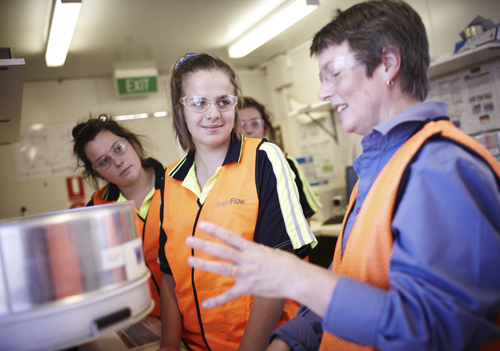
How much of what schools are able to achieve depends on the support of the surrounding community?
Certainly schools can achieve much more if they draw on the resources and support of their local communities. 例えば, we have found that schools that work with local businesses are often able to provide support to their students in the development of work-related skills and experience. The local community can also be helpful in facilitating transitions of students from school into post school employment. Our experience through the NAB学校ファースト program is that communities and businesses often complement what schools are doing in a variety of different ways.
Research done in Canada showed that 70% 学校の管理外の要因によって説明される生徒の成績の変動.
Certainly students’ backgrounds and out of school experiences impact their performances in schools. Whether a student comes from a poorer background or a higher socioeconomic area is a factor in student achievement. Much of the variation in achievement in schools is explained by factors that are outside the control of schools.
What will NAB学校ファースト winners look like in 5 今から数年?
I think they will be quite sophisticated in terms of the relationships they have built. The best kinds of partnerships that we have seen are ones in which there is a benefit not only to the school but also to the partner – the community or business organization involved in the partnership. There is a sharp focus on using the partnership to improve outcomes for students. So there is a strong sense of purpose, and that purpose is focused on the improvement of outcomes for young people. But we have seen partnerships of very different kinds that we have considered to be quite outstanding.
What themes of change do you predict schools will be putting in place to keep up with the changing times, e.g. the dramatic evolution in technology?
Given how rapidly things are developing, it’s a little difficult to see what the situation might be ten years from now, but I think it is quite clear that students will have increasing access to resources and information beyond the classroom through the internet and through social media. Students will be accessing a much broader range of information through technology and that, もちろん, will be possible from anywhere in the world. There will need to be a focus in schools on teaching students to separate quality information from other less reliable information.
Students will continue to do much of their work within classrooms, but they will also access a much wider variety of information beyond the classroom. Increasingly rich learning resources are becoming available to students. 将来は, a significant proportion of student learning may be based on real issues and real problems. Students are likely to work on those issues not only within schools, but also with a range of stakeholders, including those within the local community.
Final thoughts on model schools or themes of change to improve schools?
In Australia there is a growing interest in what can be done to support schools and to improve what schools are doing. This includes an effort to identify schools that are already doing excellent things. There is a lot of excellent practice in schools that is not always being identified and scaled up. Part of what we are doing through NAB学校ファースト is to identify where good practice is occurring and to recognize, reward and share that practice with other schools across the country. Like the rest of the world, we recognize that government programs don’t always deliver the reforms that they were designed to deliver, and we are increasingly recognizing that improvements in student achievement depend on improvements in teaching and learning practices in schools and classrooms. A number of new initiatives are being introduced to support schools in the improvement of these day to day practices. There is a focus in Australia, illustrated by NAB学校ファースト, 定義し、優れた実践を記述して、共有し、そのような練習を祝うに.
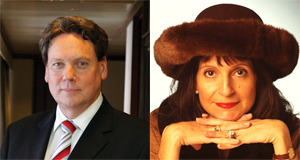

私はnの教育のためのグローバル検索, サー·マイケル·バーバー含め私に参加し、世界的に有名なオピニオンリーダー (英国), DR. マイケル·ブロック (米国), DR. レオンBotstein (米国), DR. リンダダーリング·ハモンド (米国), DR. マダブチャバン (インド), 教授マイケルFullan (カナダ), 教授ハワード·ガードナー (米国), 教授イヴォンヌヘルマン (オランダ), 教授クリスティンHelstad (ノルウェー), ジャンヘンドリクソン (米国), 教授ローズHipkins (ニュージーランド), 教授コーネリアHoogland (カナダ), 夫人. シャンタルカウフマン (ベルギー), 教授ドミニクラフォンテーヌ (ベルギー), 教授ヒューローダー (英国), 教授ベン·レビン (カナダ), 教授バリー·98名 (オーストラリア), 教授R. Natarajan (インド), DR. デニス教皇 (米国), Sridhar Rajagopalan (インド), DR. ダイアンRavitch (米国), サー·ケン·ロビンソン (英国), 教授パシSahlberg (フィンランド), アンドレアス·シュライヒャー (PISA, OECD), DR. アンソニー·セルドン, DR. デビッド·シェーファー (米国), DR. キルスティン没入Areの (ノルウェー), 首相スティーブン·スパーン (米国), イヴTheze (リセ·フランセ·米国), 教授チャールズUngerleider (カナダ), 教授トニーワーグナー (米国), 教授ディランウィリアム (英国), DR. マークWormald (英国), 教授テオWubbels (オランダ), 教授マイケル·ヤング (英国), 教授Minxuan張 (中国) 彼らは、すべての国が今日直面している大きな絵教育問題を探るように. 教育コミュニティページのためのグローバル検索
C言語. M. ルービンは広く読まれているオンラインシリーズの著者である, 教育のためのグローバル検索, また、3冊のベストセラーの著者である, 含めて 不思議の国のアリスリアル.

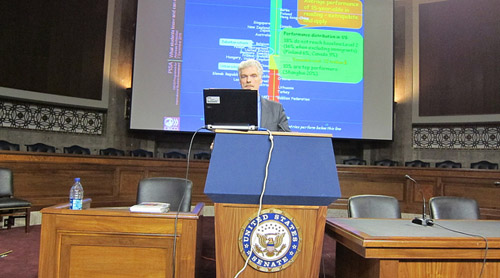
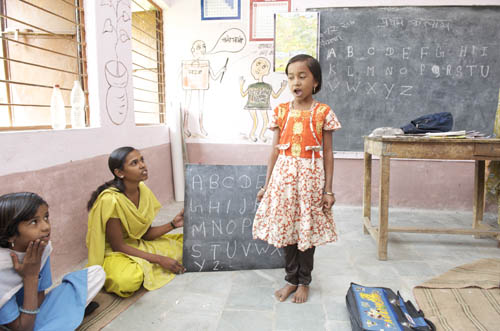
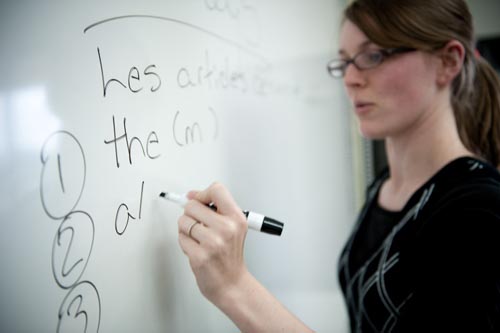
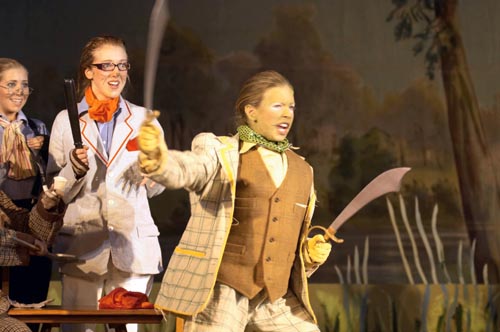
最近のコメント